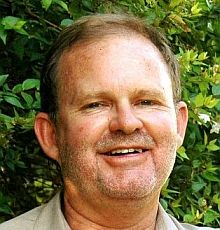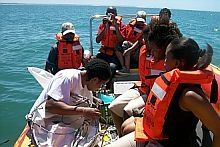The funding tightrope - balancing external and public funding streams for bigger and better SAEON science
|
- Johan Pauw, Managing Director, SAEON
As the South African summer is changing into autumn, so SAEON is maturing and becoming a credible science institution increasingly attracting funding from sources other than its core funding from the Department of Science and Technology (DST).
One of the SAEON nodes (Elwandle) is already at the level where its budget contains sixty percent external funding, some from international sources. So the question is - how does this impact on SAEON?
The mere fact that a node can attract more funding than what it receives from government as core budget, indicates that the value of an environmental observation network extends beyond just being a purely publicly funded science entity for the sake of furthering science and capacity building. Indeed, various monitoring and research programmes are performed for both semi-government and private organisations, not simply for public good but mainly for their own management objectives.
Funding sources and partners
This situation seems to imply a healthy position for SAEON within the National System of Innovation. It is true that with more funding and more partners, SAEON can do so much more within its given mandate. It is also true that with a variety of funding sources and partners, SAEON is more secure and resilient in the face of a global economic recession.
Of course, the issues of mandate creep or distorted performance on mandate need to be carefully watched as the temptation of easy money on offer may be distracting. What is less satisfactory is that all the additional observational work already requires the employment of additional staff in various suitable positions other than long-term contracts. As such the capacity of SAEON to perform on externally funded projects is always potentially threatened.
SAEON was established on the premise that there already exist functional environmental monitoring systems and long-term datasets. It should be noted that currently some of these monitoring systems are collapsing or threatened by withdrawal of funding and lack of capacity. There are also some that have been discontinued but are worthy of resuscitation.
National impact
The national impact of this is comprehensive in terms of both the availability of environmental management information for policy and reporting, as well as the ability to do reliable science. The former reality concerns relevant government departments, whereas the latter directly concerns the DST and the National System of Innovation. SAEON’s mandate is to secure long-term monitoring systems and data sets, but this is clearly not a simple matter given the potential inter-organisational politics and real budget reductions or cancellations which led to a deteriorating situation in the first place.
The two main issues raised here clearly suggest that SAEON should grow its nodes by appointing additional research and technical staff with financial support from the DST in order to increase its capacity to appropriately serve the rapidly growing national need for in situ long-term environmental observations and research. Long-term environmental observation is not a competency of Higher Education which is of necessity locked into short-term postgraduate projects. Though valuable contributions are derived from postgraduate research, it does not offer the continuity that is required.
Similarly, for many science institutions, environmental monitoring is not a first priority and can only be done with external funding which would normally be for short-term projects only. A notable exception is the South African Weather Service, but which is also to some extent reliant on non-government income to serve its mandate.
Broad-based consolidated environmental science platform
To fulfil its mandate for in situ long-term environmental observation and research in an uncompromised way, SAEON should work towards employing a larger staff component on core funding from the DST. This would allow SAEON to effectively provide a broad-based and consolidated environmental science platform within the NSI and the Global Change Grand Challenge, which will be of great value to the public, Higher Education and private users.
The ideal situation represents a “big science” programme at a fraction of the cost of much publicised high-technology programmes. As it is only government who can entertain a long-term public good investment that is not for financial profit, SAEON will have to convincingly engage government on the issue of its core funding.












